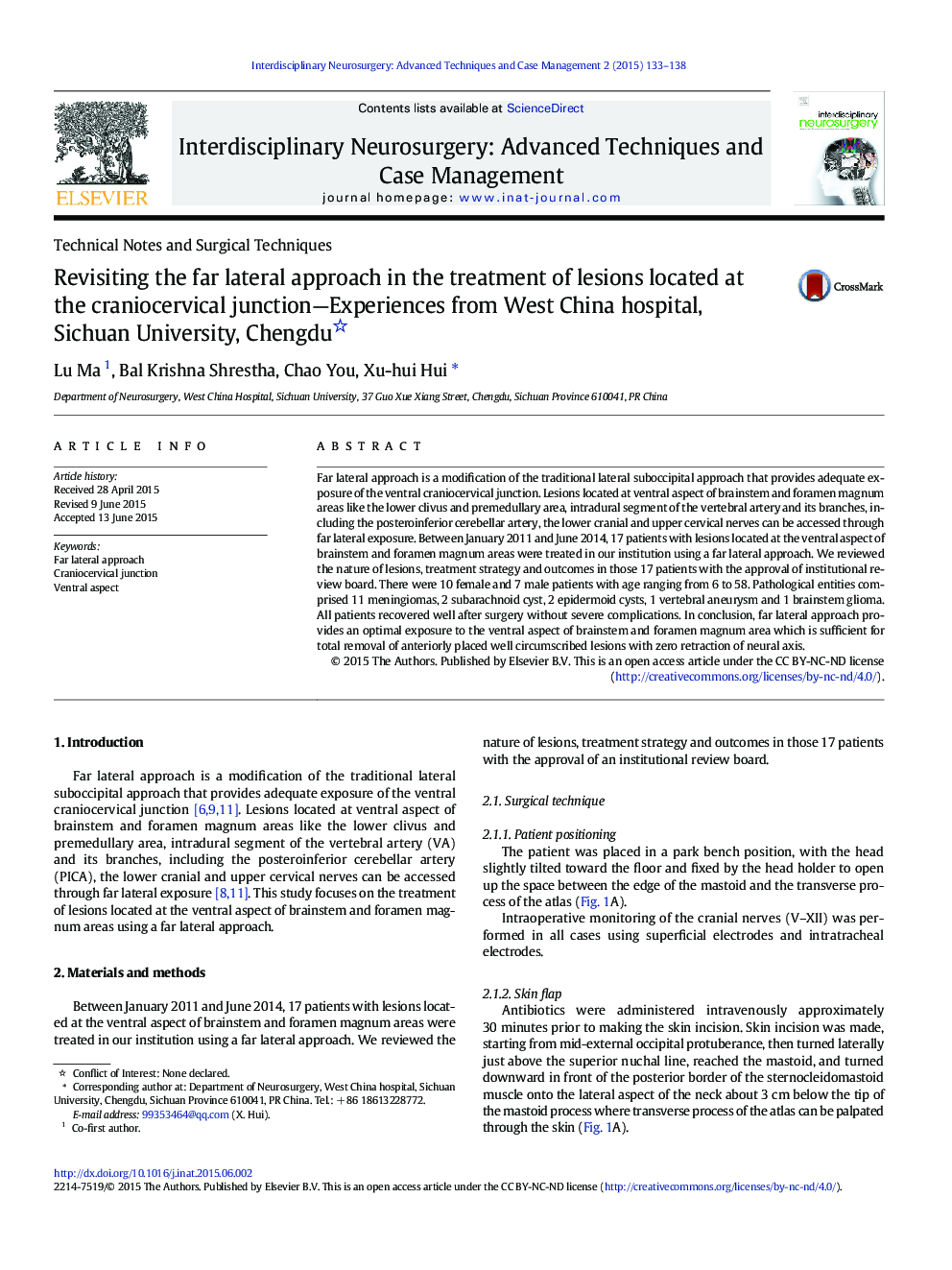| Article ID | Journal | Published Year | Pages | File Type |
|---|---|---|---|---|
| 3057844 | Interdisciplinary Neurosurgery | 2015 | 6 Pages |
•Far lateral approach provides adequate exposure of ventral craniocervical junction.•Inverted “L” shaped skin flap has relatively less skin and muscles incision.•Lesions can be reached with zero retraction of neural axis
Far lateral approach is a modification of the traditional lateral suboccipital approach that provides adequate exposure of the ventral craniocervical junction. Lesions located at ventral aspect of brainstem and foramen magnum areas like the lower clivus and premedullary area, intradural segment of the vertebral artery and its branches, including the posteroinferior cerebellar artery, the lower cranial and upper cervical nerves can be accessed through far lateral exposure. Between January 2011 and June 2014, 17 patients with lesions located at the ventral aspect of brainstem and foramen magnum areas were treated in our institution using a far lateral approach. We reviewed the nature of lesions, treatment strategy and outcomes in those 17 patients with the approval of institutional review board. There were 10 female and 7 male patients with age ranging from 6 to 58. Pathological entities comprised 11 meningiomas, 2 subarachnoid cyst, 2 epidermoid cysts, 1 vertebral aneurysm and 1 brainstem glioma. All patients recovered well after surgery without severe complications. In conclusion, far lateral approach provides an optimal exposure to the ventral aspect of brainstem and foramen magnum area which is sufficient for total removal of anteriorly placed well circumscribed lesions with zero retraction of neural axis.
Graphical abstractFigure showing far lateral approach. (A) Park bench position with skin incision marking. (B) Exposure of suboccipital triangle after muscle dissection in layers. (C) Intraoperative view after suboccipital craniectomy and C1 hemilaminectomy. (D) Intraoperative view after drilling one third of occipital condyle. (E) Intraoperative retraction-less exposure of the tumor. (F) Intraoperative photo after complete removal of tumorFigure optionsDownload full-size imageDownload as PowerPoint slide
